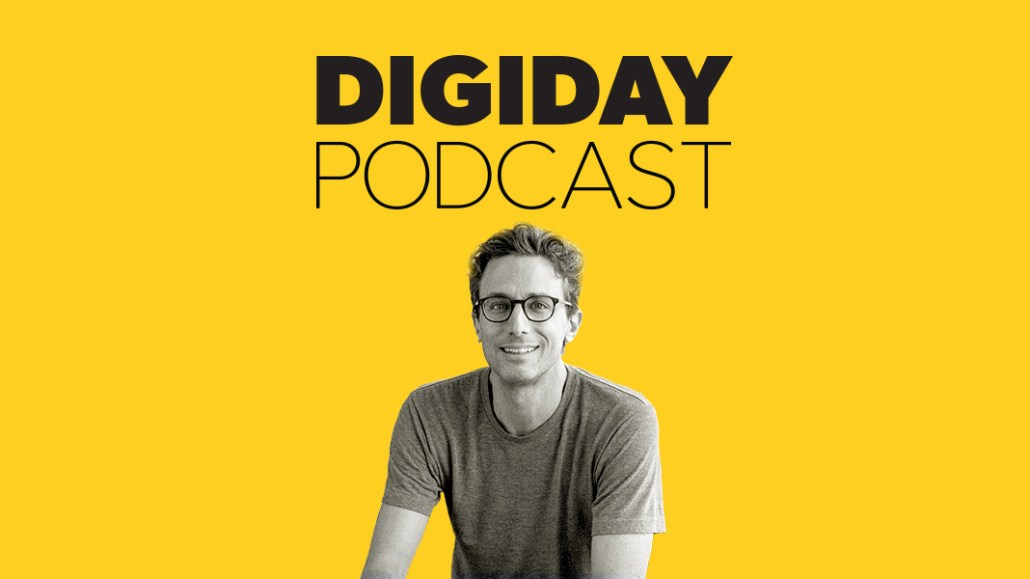
Subscribe: Apple Podcasts | Stitcher | Google Play | Spotify
BuzzFeed is in the midst of change.
A few years ago most of the company’s revenue came from native advertising — in 2020 that category will bring in just 20%. Other parts of the revenue pie — commission on purchases driven by BuzzFeed content, as well as BuzzFeed’s own branded products — have grown enough for the company to bring in $320 million in 2019, and for BuzzFeed to forecast profitability.
“Over the last three years we’ve really transformed the way BuzzFeed makes money,” BuzzFeed CEO Jonah Peretti said on the Digiday Podcast.
Peretti joined the Digiday Podcast to discuss the growing transparency coming to attribution, affiliate revenue and BuzzFeed News’ intangible benefits.
Here are a few highlights from the conversation, lightly edited for clarity.
The content itself finally generates revenue
“In the early days of BuzzFeed we would do content and we would make almost no revenue from the content, and then we would do native advertising and make our money that way. Now we have a media network where every time we make a video we generate revenue from preroll or midroll. Every time we make an article we generate revenue through programmatic or custom display or direct sold display. And overall that works out to about $150 million in revenue, and it costs us less than $150 million to make all that content.”
Sharing was king, now buying is
“Last year we drove about half a billion [dollars] in directly measurable sales downstream from all of our commerce. [BuzzFeed readers] see a gift guide, they see an interesting roundup, they click through. We get an affiliate commission on all of that revenue — we make about a tenth of it in commission. It’s a great business, it’s very high margin revenue that comes back to us. The reason we were able to do that is we had this big network, we had lots of people who love BuzzFeed content. Because we had focused on making shareable content, we thought a lot about how people take action. How does content inspire someone to do something? In early BuzzFeed, it was inspiring someone to share something with a friend. Now we took that same data driven approach to say ‘can we make something that inspires someone to buy something, or transact or go on a trip?'”
Attribution and chill
“How many times do people watch a movie because they read about in the New York Times? And the New York Times is not getting any credit for that at all. In our case, so many people read about different cultural products on BuzzFeed. We can now directly connect that to the consumption because all the big traditional media companies are now moving online and everything is moving to screening. It used to be we would show advertisements for a TV show or write about a TV show in our editorial coverage, and people would have to go — in our case, they might not even have cable, with our young audience. If they can’t watch the show it’s a totally different system, and you can’t really connect the dots. Now you’re starting to be able to connect the dots.”
BuzzFeed News isn’t going anywhere
“News adds a lot of halo and credibility. It drives more repeat viewers. It enhances the BuzzFeed.com product, where people are coming to BuzzFeed for fun and entertaining content, but when there’s big news happening, having that news organization be able to provide content is important. It has a lot of benefits in terms of our relationship with platforms, our relationship with our audience, our position in the marketplace. And we’re able to do it in a way where BuzzFeed as a whole can be profitable. BuzzFeed as a whole will be profitable this year. We tipped over into profitability the back half of last year. So if we can run a profitable, global media company at scale, having a news division that’s strong and contributes to the company makes a lot of sense.”
More in Media

Media Briefing: The 2024 media glossary, pt. 2
In part two of the 2024 Media Glossary, we tackle many of the terms you may have heard in conversations about generative AI as well as increasing the value of publishers’ on-site content.

Amid layoffs and cost cutting, Time CEO Jessica Sibley is expecting a ‘very strong second half’
Time CEO Jessica Sibley joins the latest episode of the Digiday Podcast.

How IBM and the US Open are using Watsonx to create more AI-generated tennis content
Additions include match reports delivered within minutes and AI-generated long-form articles edited by a human editorial team.





